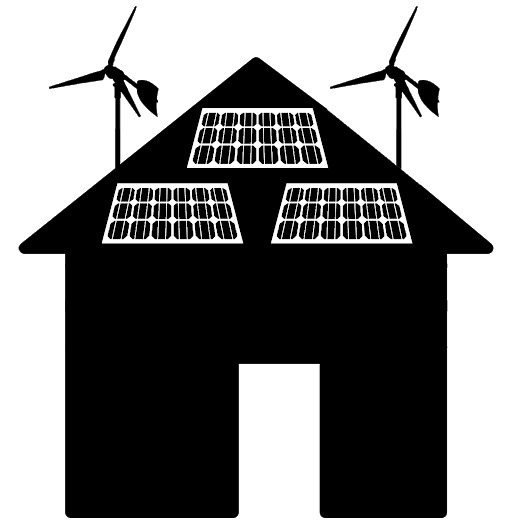Smart Export Guarantee SEG
|
Microgeneration is the small-scale generation of heat and electric power by individuals, small businesses and communities to meet their own needs, as alternatives or supplements to traditional, centralised grid-connected power. |
Contents |
[edit] Introduction
The Smart Export Guarantee (SEG) is a government-backed programme that became available on 1 January 2020. The SEG initiative was introduced in conjunction with the phase out of the Feed-in Tariff (FIT) programme, which was discontinued for new applicants on 31 March 2019.
[edit] Background
The SEG was brought forward by the Department of Business Energy and Industrial Strategy (BEIS) on 10 June 2019. It was introduced by the Smart Export Guarantee Order 2019 - which amended the electricity Supply Licence Conditions (SLCs).
The SEG requires licensed suppliers (referred to as SEG licensees) with at least 150,000 domestic electricity customers to offer at least one SEG compliant tariff to any eligible generators (referred to as SEG generators). Other suppliers may participate on a voluntary basis. A list of mandatory and voluntary SEG licensees is available from the Ofgem site.
To confirm their status, all licensed electricity suppliers must notify Ofgem by 14 February each year. The status of a supplier then applies for the duration of the relevant SEG year (1 April - 31 March).
The announcement from Ofgem explained that the SEG would act as an incentive for both domestic and commercial energy generators able to export electricity up to a capacity of five megawatts (MW) - or up to 50kW for micro-combined heat and power - to the grid. Eligible small-scale low-carbon generators include:
- Solar photovoltaic (solar PV)
- Wind
- Micro-combined heat and power (micro-CHP)
- Hydro
- Anaerobic digestion (AD)
In order to be eligible, generation technology must be installed within Great Britain.
[edit] Payment arrangements
The SEG requires licensees to pay small scale generators for low-carbon electricity which they export back to the National Grid. This arrangement is permitted provided the parties satisfy the rest of the eligibility criteria. For more information, see Guidance for SEG Licensees and Smart Export Guarantee: Guidance for generators.
Licensees dictate the payment rate, the contract length and other terms for generators. There is no prescribed tariff rate, type or length, but the tariff must offer an above zero pence rate per kilowatt hour (kWh) of export at all times in order to be compliant.
SEG generators are paid an export tariff which serves as reimbursement for the electricity that is exported back to the National Grid.
[edit] SEG v FIT
Both the SEG and FIT were introduced to promote commercial and residential investment in renewable microgeneration technology. But the SEG does not directly replace FIT.
One significant difference is that FIT pays for energy generation and export; the SEG only pays for exported energy. However, some licensees do permit generation arrangements to stay in place when generators sign up for the SEG tariff.
Another difference is tariff rate determination. Under FIT, this rate was dictated by Ofgem. With the SEG, it is the licensee that determines this rate.
Those who signed up to FIT prior to its discontinuation in 2019 will continue to receive payments for the duration of their contract.
[edit] Related articles on Designing Buildings Wiki
- Domestic micro-generation.
- Electricity supply.
- Energy harvesting.
- Feed in tariff.
- Microgeneration.
- Microgeneration Certification Scheme 2020.
- Micro-CHP.
- Ofgem
- Power generation.
[edit] External resources
Featured articles and news
RTPI leader to become new CIOB Chief Executive Officer
Dr Victoria Hills MRTPI, FICE to take over after Caroline Gumble’s departure.
Social and affordable housing, a long term plan for delivery
The “Delivering a Decade of Renewal for Social and Affordable Housing” strategy sets out future path.
A change to adoptive architecture
Effects of global weather warming on architectural detailing, material choice and human interaction.
The proposed publicly owned and backed subsidiary of Homes England, to facilitate new homes.
How big is the problem and what can we do to mitigate the effects?
Overheating guidance and tools for building designers
A number of cool guides to help with the heat.
The UK's Modern Industrial Strategy: A 10 year plan
Previous consultation criticism, current key elements and general support with some persisting reservations.
Building Safety Regulator reforms
New roles, new staff and a new fast track service pave the way for a single construction regulator.
Architectural Technologist CPDs and Communications
CIAT CPD… and how you can do it!
Cooling centres and cool spaces
Managing extreme heat in cities by directing the public to places for heat stress relief and water sources.
Winter gardens: A brief history and warm variations
Extending the season with glass in different forms and terms.
Restoring Great Yarmouth's Winter Gardens
Transforming one of the least sustainable constructions imaginable.
Construction Skills Mission Board launch sector drive
Newly formed government and industry collaboration set strategy for recruiting an additional 100,000 construction workers a year.
New Architects Code comes into effect in September 2025
ARB Architects Code of Conduct and Practice available with ongoing consultation regarding guidance.
Welsh Skills Body (Medr) launches ambitious plan
The new skills body brings together funding and regulation of tertiary education and research for the devolved nation.
Paul Gandy FCIOB announced as next CIOB President
Former Tilbury Douglas CEO takes helm.
UK Infrastructure: A 10 Year Strategy. In brief with reactions
With the National Infrastructure and Service Transformation Authority (NISTA).























